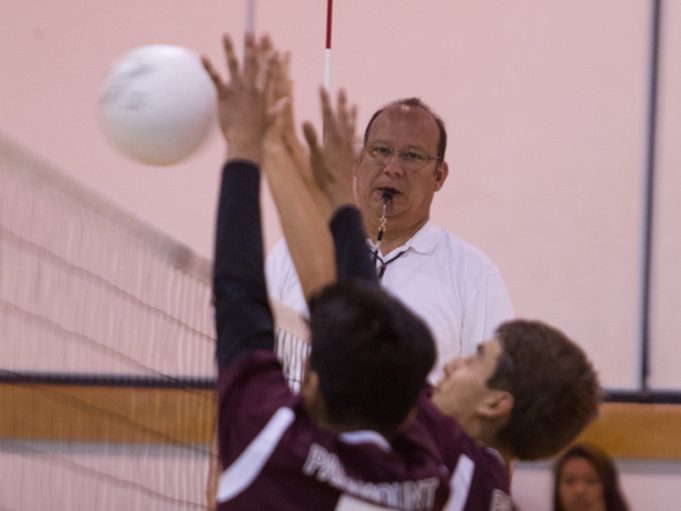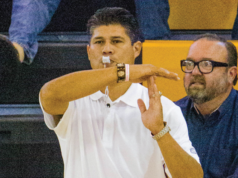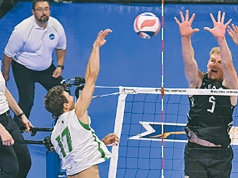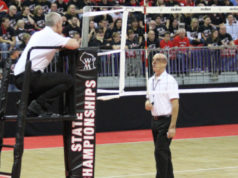Collective blocks, at face value, seem pretty cut and dried — multiple players in close proximity at the net, reaching higher than the top of the net. But it can also result in some unusual situations that require quick thinking on the part of the referees.
First, under all rules codes, a player must be near the net, reaching higher than the top of the net, to be considered a blocker. In addition, a collective block is completed when one of the players touches the ball. In essence, when one of the blockers touches the ball, all of the blockers are considered to have touched it. Therein lies a challenge: What if one of the blockers is a back-row player?
Secondly, since only the players who are reaching higher than the top of the net are considered blockers, what if a teammate who is near a collective block, but not reaching higher than the net, contacts the ball (or is contacted by the ball) during that playing action?
A Back-Row Player
A back-row player may not complete a block or participate in a completed collective block. Sometimes a back-row player will get caught up in the action and forget that she can’t block, resulting in an illegal block. But other times, a back-row setter may get “trapped” at the net trying to save a teammate’s overpass. Inevitably, the opponent often tries to attack an overpass, and if the setter’s front-row teammate goes up to attempt to block the opponent’s attack of the overpass, the back-row setter may end up part of the blocking action, even though that wasn’t the intent. When the back-row setter is reaching higher than the net while trying to save the ball, and his or her teammate (i.e., the blocker) touches the opponent’s attack hit, a collective block has occurred, by definition. And since a back-row player was involved, it is an illegal block.
Referees must always be alert when a back-row player is near the net during the playing action, especially if that player is reaching higher than the net.
19
The second challenge with collective blocks occurs when a player near the blocking action, who is not reaching higher than the net, contacts the ball. It often results in a block and then a first team contact in quick succession. The speed of that action can catch the referees off guard.
It can occur in two basic situations: 1) a blocker jumps earlier than the others and consequently is no longer reaching higher than the net when the ball contacts the other blockers before it touches her or him, or 2) a back-row player, knowing that they can’t block, will stand with hands reaching above the head but not higher than the top of the net, and the ball will rebound from the blockers to the back-row player. In both cases, when the ball touches the player(s) reaching above the net, that is the blocking part of the action. And when the ball then rebounds to the player who is not reaching higher than the net or lowers their hands (soft block), that is the team’s first contact.
A collective block requires referees to quickly determine a player’s reach in relation to the height of the net, the reach of other players in close proximity, as well as ensuring back-row players are not involved in the blocking action. The referees must then determine whether the subsequent contact was part of the collective block or should be considered the team’s first contact.
What's Your Call? Leave a Comment:
Note: This article is archival in nature. Rules, interpretations, mechanics, philosophies and other information may or may not be correct for the current year.
This article is the copyright of ©Referee Enterprises, Inc., and may not be republished in whole or in part online, in print or in any capacity without expressed written permission from Referee. The article is made available for educational use by individuals.

















